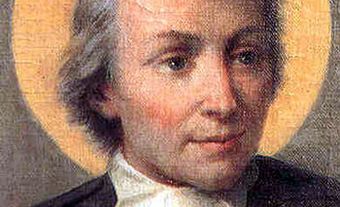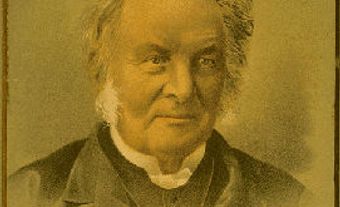Education, Alternative
The philosophical roots of "alternative education" derive from 2 related but conflicting educational traditions.
Progressive Tradition
One is the modern progressive tradition represented by American philosopher John Dewey and his followers in the US, by the post-WWI New Schools Movement in Great Britain, by the Steiner (Waldorf) schools on the European continent and, in the 1960s, by the Hall-Dennis (Committee on Aims and Objectives of Education) and Worth (Commission on Educational Planning) reports for Ontario and Alberta. This tradition stresses both the need to accommodate curriculum and teaching to the stages of child development and the gradual integration of the child into adult society through planned experiential learning. Within the tradition, education is also viewed as a major vehicle for social reform and for the broad dissemination of democratic principles and practices.
Libertarian Tradition
The second tradition is strongly libertarian, stressing the rights of parents and children to make their own educational and life choices. Writers in this tradition, eg, A.S. Neill in Great Britain and John Holt in the US, uphold the individual freedom and innate goodness of the child against institutional and social conformity and the corrupting influences of modern society. Independent "free" schools which flowered in Canada and the US in the middle and late 1960s (and soon disappeared) were rooted in this libertarian tradition.
Differences and Similarities
While both traditions share certain attitudes, eg, accommodation to individual needs and interests and a critical stance toward modern corporate society, the progressive tradition leans toward intervention and the careful planning of the child's educational experiences and activities. The libertarian tradition, meanwhile, stresses noninterference with "natural" growth and learning processes and the importance of personal choice and freedom in educational matters. Both traditions intermingled in Canada in the open-education movement in public elementary education in the late 1960s and in the public alternative schools that emerged in the 1970s.
Origins
The term "alternative school" first came into general usage in Canada with the establishment in the early 1970s of several small elementary and secondary schools under the jurisdiction of public boards of education. In Toronto, parent-teacher co-operative elementary alternative schools organized along the lines of the family-grouped, activity-based British Infant Schools were established. The term "alternative" was adopted partly to distinguish these schools from the independent, parent-student-teacher-run "free" schools that preceded them (and from which some of them actually evolved) and to emphasize the boards' commitment to options within the public system. With the increasing emphasis on educational pluralism and choice in the 1970s, the alternative-school label was adopted by many newer, independent private schools wishing to identify themselves as alternatives to "mainstream" public education.
School Types
In the early 1980s attention shifted to special schools and programs for the academically gifted and artistically talented as well as to programs linking schooling with the workplace ("co-operative education"). In the public sector most alternative high schools offer independent study programs, basic-skills programs, mini-high schools with a mixture of conventional and nonconventional courses, and schools with an arts focus. They also offer smaller classes, closer and more informal relations with teachers, and greater flexibility in course selection and timetabling.
Political pressures to provide for the "special" learning needs of students who were doing poorly in or dropping out of regular schools persuaded more school boards to establish re-entry and work-study programs for high-school dropouts, community-oriented outreach programs, and independent study programs for bright, self-motivated secondary students. As the Canadian economy stagnated in the 1990s, conservative public "alternative" schools modeled after the private academy were added to the progressive/libertarian mix. These featured, in addition to a core liberal arts curriculum with frequent testing of academic achievement, school commitment contracts, strict codes of conduct and even school uniforms.
For parents, co-operatively governed elementary-school alternative programs provide not only a choice of program philosophies but also opportunities to be involved more closely with the schooling of their children. Parents may sit on various internal governance committees, assist in the classroom, serve as resource people in the program and have direct access to the teachers. Co-operative/alternative elementary schools have also pioneered the extension of early-childhood education through all-day kindergarten programs and the provision of after-school day-care programs for children of working parents (especially single mothers).
Staffing
Judged by curriculum, pedagogy and, in the case of elementary alternatives, even size, the differences between alternative and traditional schools are not great. Teachers in public alternative schools are drawn by and large from the same universities and teacher-training programs as teachers in traditional schools, and most teach in traditional schools before moving to an alternative school. Basic curriculum and materials are also similar in both types of alternative schools. Practices probably vary more from teacher to teacher than from school to school. With declining enrolments, some mainstream elementary schools have shrunk to the size of alternative schools. At the secondary level in particular, stiffer university admission requirements and a general trend toward curriculum standardization threaten to reduce even further any curriculum differences between mainstream and alternative schools.
Administration
What differentiates alternative schools from others is the sense of ownership, autonomy and control that teachers, parents and students feel towards their schools, even as governments and school boards move to assert and maintain stronger administrative control over alternative schools. If present trends continue, alternative education may be incorporated into an expanding "special education" network within school systems. In a more optimistic scenario, alternative schools may be forerunners of a more decentralized, pluralistic, community-based education system.
Current Developments
The so-called "Charter School" movement in the US reflects this orientation. Several states have passed legislation permitting their departments of education or local school boards to issue "charters" directly to individual schools wishing to operate autonomously. Charters could be issued to universities or private corporations to operate schools as well. An outgrowth of the earlier "Schools of Choice" movement, charter schools would be funded directly by the State subject to the terms and conditions of their charters. If this approach is adopted by provinces in Canada (Alberta has already done so), it could have major consequences for the future of school boards, which currently mediate between individual schools and provincial ministries of education.
See also charter schools.

 Share on Facebook
Share on Facebook Share on X
Share on X Share by Email
Share by Email Share on Google Classroom
Share on Google Classroom


